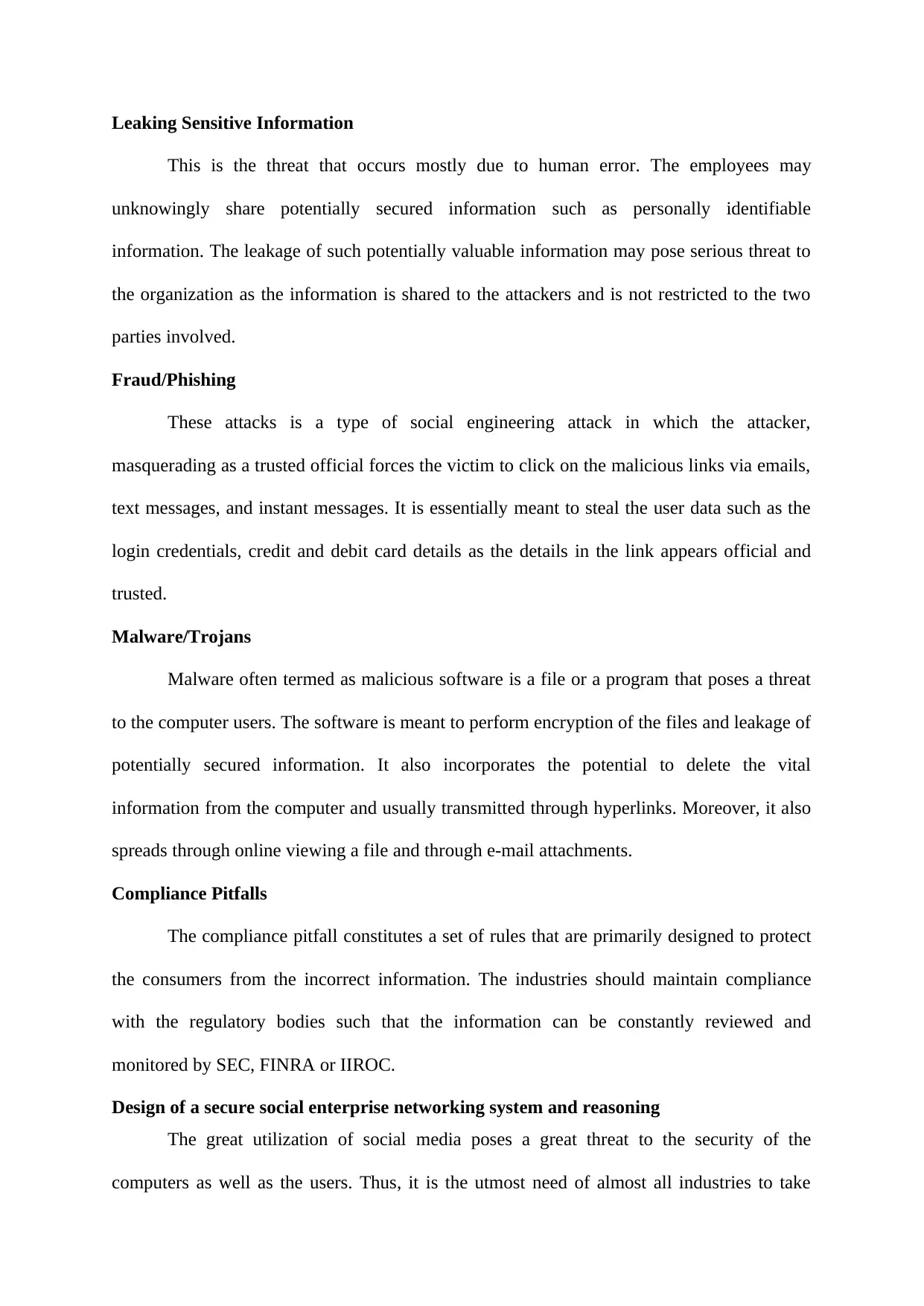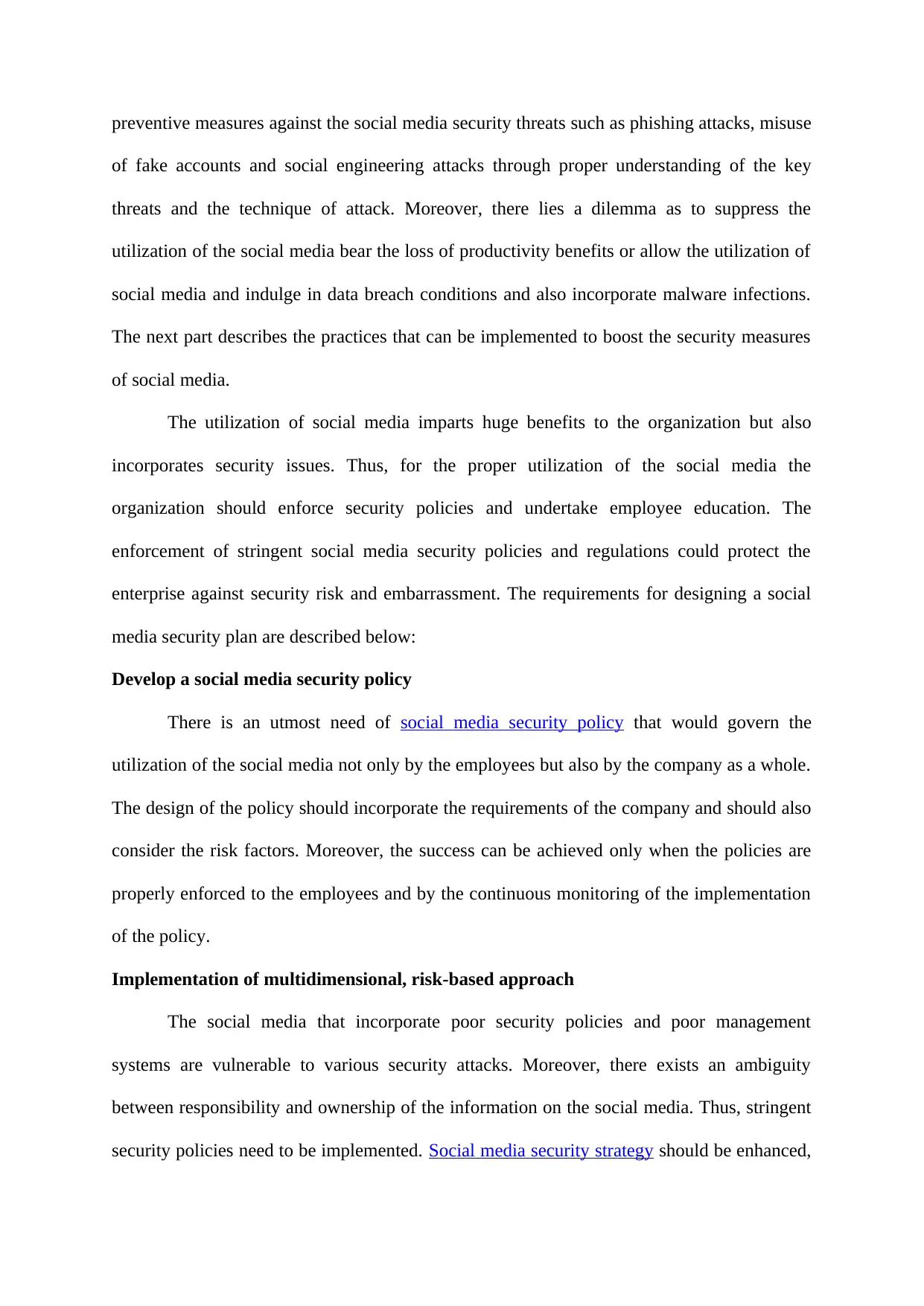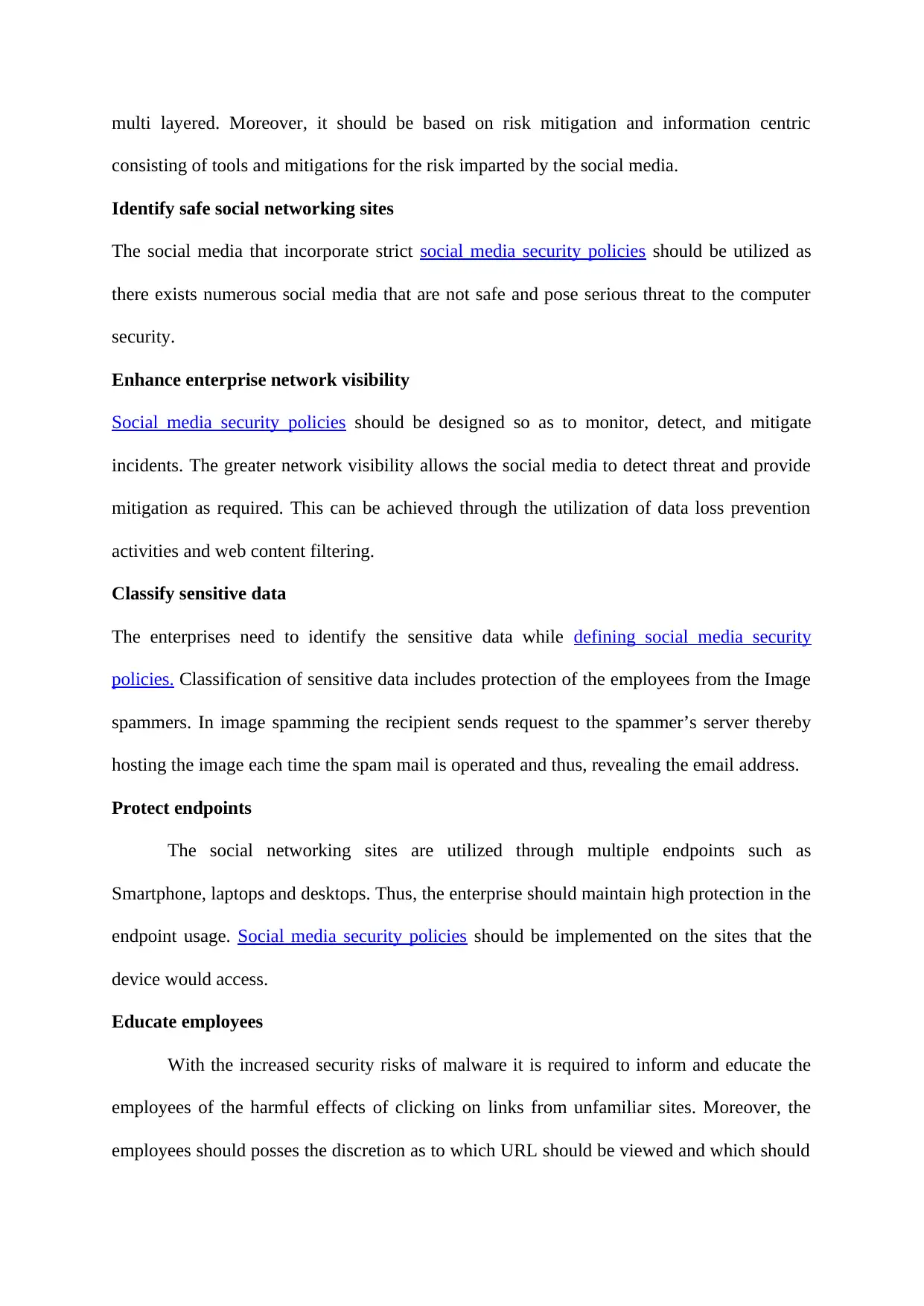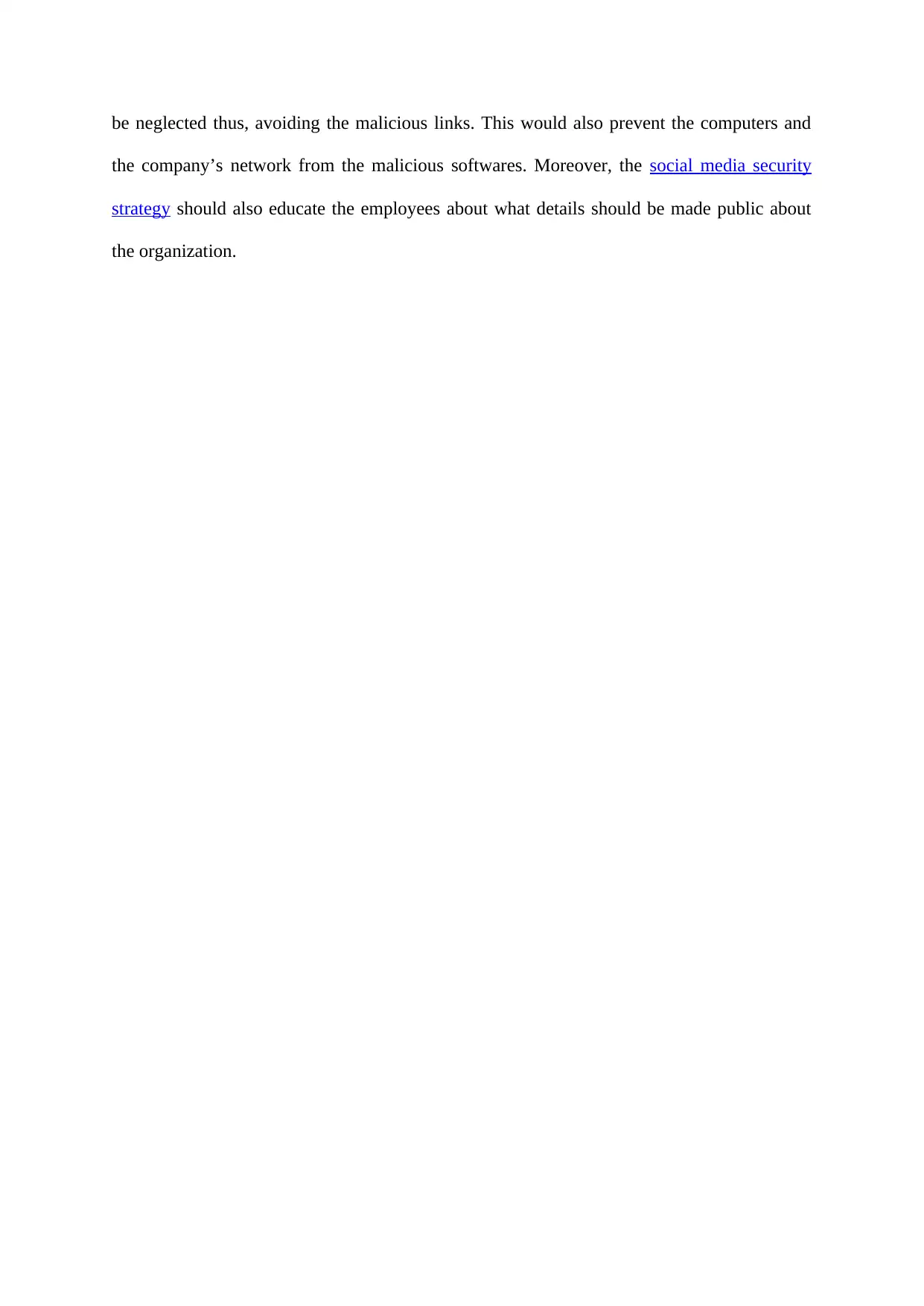Social Media Security Threats and Practices for Secure Social Enterprise Networking System
VerifiedAdded on 2023/06/15
|4
|942
|274
AI Summary
This article discusses the various social media security threats such as fraud/phishing, malware/trojans, compliance pitfalls, and leaking sensitive information. It also provides practices for designing a secure social enterprise networking system, including developing a social media security policy, implementing a multidimensional, risk-based approach, identifying safe social networking sites, enhancing enterprise network visibility, classifying sensitive data, protecting endpoints, and educating employees.
Contribute Materials
Your contribution can guide someone’s learning journey. Share your
documents today.
1 out of 4









![[object Object]](/_next/static/media/star-bottom.7253800d.svg)